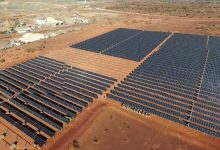Integrating the use of hydrogen in mining operations will be key to achieving the next phase of emissions reductions in the resources sector, including by kick-starting a hydrogen enabled green steel industry in Australia, the Energy and Mines conference has heard.
Speaking at the opening of the virtual Australian Energy and Mines conference, chief of the Australian Renewable Energy Agency Darren Miller, said that the use of hydrogen would be the key next step, with the agency believing that it has already demonstrated the business case for using solar electricity to power remote mining operations.
“We still have a lot of work to do in reducing or eliminating the use of fossil fuel diesel and natural gas for the mining sector,” Miller told the Energy and Mines conference. “The good news is that we’ve been making a lot of progress on the electricity side. And we hope to make a lot of progress on other elements of the mining industry’s energy needs going forward.”
ARENA is currently assessing applications from projects seeking to share in $70 million in funding to support the construction of some of Australia’s first large-scale renewably powered electrolysers. Miller said ARENA is aiming to fund two or three electrolysers, each of a capacity larger than 10MW, which would significantly increase Australia’s renewable hydrogen production capacity.
Miller said that the advances in solar technologies, and the significant cost reduction in solar energy, have provided the opportunity to also establish a commercially competitive renewable hydrogen industry in Australia.
“While Australia is viewed as a key market for the production of hydrogen, it’s very early days, and the industry has a long way to go before its commercial,” Miller said. “The very important point is that ARENA support, and government support more broadly, is still needed to get hydrogen to the point of commerciality the way we’ve done with solar and wind.
“In terms of the renewable pathway, it’s crucial to realise that the story of low cost hydrogen is actually the story of low cost solar PV.”
Miller said that the emergence of lower cost, and low emissions hydrogen, would provide opportunities to cut emissions in the mining sector, and the production of outputs like steel and aluminium, as has been identified in the Morrison government’s Technology Road map launched in September.
“Low carbon steel and aluminium has also been called out [in the Technology Roadmap] and again, there’s another role for the mining sector in the supply chains, as well as a role for hydrogen in providing high temperature heat as well as feedstock for some of the chemical processes involved particularly in the reduction of iron ore to iron.”
ARENA will receive a new allocation of more than $1.6 billion in funding under the federal budget to be handed down on Tuesday night. Miller said that he expects to use some of this funding to further support the use of hydrogen in the resources sector.
Miller acknowledged that ARENA would likely have its investment mandate amended and expanded to broaden the range of technologies it could support, to open up the agency to funding hydrogen produced from fossil fuels, when paired with carbon capture and storage technologies.
Western Australian minister for regional development, Alannah McTiernan, said that the prospects of large-scale renewable energy and hydrogen production projects being established in Western Australia was also opening up the prospect of a resurgence of Australian metals manufacturing.
“Currently power prices for large business tariffs around the 25 to 40 cents kilowatt-hour. The large scale, hydrogen projects are really looking at driving that cost down to around five cents per kilowatt-hour,” McTiernan said. “And if we’re able to achieve that, then suddenly the possibility of us in a decade’s time becoming steel manufacturers or even how aluminium smelters is very possible.”
McTiernan also echoed the role hydrogen could play in driving down the direct emissions caused by the mining sector.
“We know that when we look at scope one and scope two emissions, that mining constitutes around 41% of WA’s is greenhouse gas emissions,” McTiernan added. “And around half of that is due to the use of imported diesel for transport and stationary power in the mining sector. We have aspirations to replace that with renewable hydrogen and we see a great deal of interest from mining companies coming forward.”










